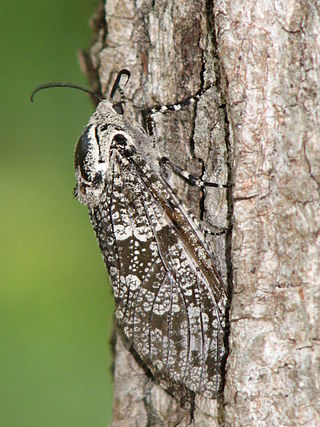
The Cossinae are the nominate subfamily of the Cossidae. The caterpillars of several Cossinae species, such as the carpenterworm and the goat moth, are significant pests. On the other hand, in Chile the caterpillars of the Chilean moth are collected on a commercial scale for sale as fishing bait and terrarium pet food; they are usually called "butterworms" in international trade.
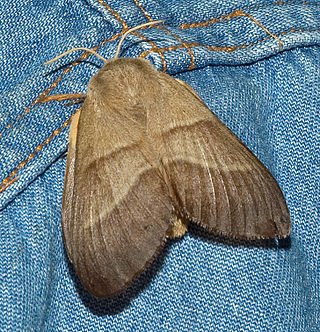
The Lasiocampinae are a subfamily of the moth family Lasiocampidae. The subfamily was described by Thaddeus William Harris in 1841.

Cisthene is a genus of lichen moths in the family Erebidae. The genus was erected by Francis Walker in 1854.
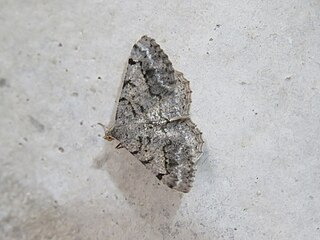
Frederickia is a genus of moths in the family Geometridae described by Alexander Douglas Campbell Ferguson in 2008.

Idia is a genus of litter moths of the family Erebidae first described by Jacob Hübner in 1813.

Cryphia is a genus of moths of the family Noctuidae. The genus was erected by Jacob Hübner in 1818.

Grotella is a genus of moths of the family Noctuidae first described by Leon F. Harvey in 1875.

Homorthodes is a genus of moths of the family Noctuidae.
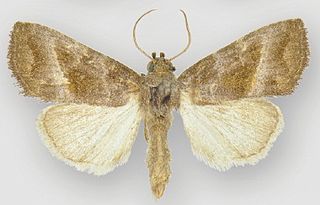
Ogdoconta is a genus of moths of the family Noctuidae.
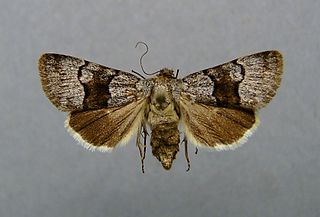
Sympistis is a genus of moths of the family Noctuidae. The genus was erected by Jacob Hübner in 1823.
Caloecia is a genus of moths in the family Lasiocampidae. The genus was erected by William Barnes and James Halliday McDunnough in 1911. Both species are known from the US state of Arizona.
Hymenodria is a monotypic moth genus in the family Geometridae erected by James Halliday McDunnough in 1954. Its only species, Hymenodria mediodentata, was first described by William Barnes and McDunnough in 1911. It is found in North America.

Nemoria is a genus of emerald moths in the family Geometridae. It was named by Jacob Hübner in 1818.
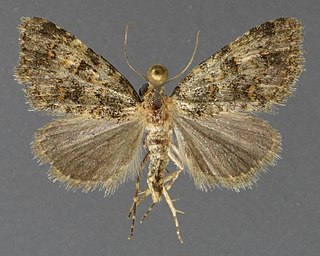
Cryphia nana is a moth of the family Noctuidae first described by William Barnes and James Halliday McDunnough in 1911. It can be found in the US state of California.
Schinia carolinensis is a moth of the family Noctuidae first described by William Barnes and James Halliday McDunnough in 1911. It is found in the United States from eastern North Carolina to the Florida peninsula and probably along the Gulf Coast.
Idia parvulalis is a species of litter moth of the family Erebidae first described by William Barnes and James Halliday McDunnough in 1911. It is found in North America, including its type location, the Santa Catalina Mountains in south-eastern Arizona.
Decaturia is a monotypic snout moth genus. Its only species, Decaturia pectinalis, is found from California to southern Arizona. Both the genus and species were described by William Barnes of Decatur, Illinois, and James Halliday McDunnough in 1912.

Dasychira vagans, the variable tussock moth, is a moth of the family Erebidae. It is found in North America, where it has been recorded from Newfoundland to southern British Columbia in the north and North Carolina and Utah in the west. The habitat consists of forests, including coastal rainforests, high elevation mixed hardwood-conifer forests, oak woodlands and mixed hardwood forests. The species was first described by William Barnes and James Halliday McDunnough in 1913.
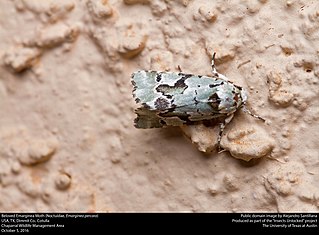
Psaphidini is a tribe of owlet moths in the family Noctuidae. There are at least 40 genera and at least 90 described species in Psaphidini.

Homorthodes hanhami is a species of cutworm or dart moth in the family Noctuidae first described by William Barnes and James Halliday McDunnough in 1911. It is found in North America.















